ATI Math Validation 2023
Total Questions : 16
Showing 16 questions, Sign in for moreCalculate the following dosage using the ratio and proportion method. Round the answer to the nearest tenth. Order: Heparin 17,000 units sub-cut daily
Available: Heparin labeled 20,000 units per mL
Explanation
To solve this problem using the ratio and proportion method, we must set up a proportion with the ordered dose on one side and the available dose on the other. Then we cross-multiply and solve for the unknown quantity, which is the volume of heparin to be administered.
The proportion is:
17,000 units / x ml = 20,000 units / 1 ml Cross-multiplying gives:
17,000 * 1 = 20,000 * x
Solving for x gives:
x = 17,000 / 20,000
x = 0.85 ml
Therefore, the volume of heparin to be administered is 0.85 ml.
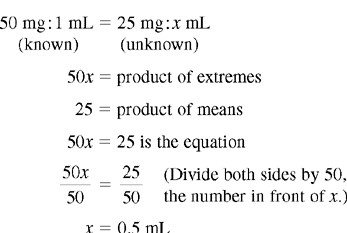
Instructions: Calculate the flow rate in units/hr (Equipment used is programmable in whole units/hr). Order: 100,000 units of Heparin in 1,000 mL to infuse at 50 mL/hr. Calculate the rate in units/hr.
Explanation
To solve this problem, we need to find the concentration of heparin in the solution and then multiply it by the infusion rate. The concentration of heparin is the amount of heparin divided by the volume of the solution. In this case, the concentration is:
100,000 units / 1,000 ml = 100 units/ml
The infusion rate is given as 50 ml/hr. To find the flow rate in units/hr, we multiply the concentration by the infusion rate:
100 units/ml * 50 ml/hr = 5000 units/hr
Therefore, the flow rate in units/hr is 5000 units/hr.

Instructions: Calculate the flow rate in mL/hr (The equipment used is programmable in whole mL/hr). Order: 3,600 mL of D5W in 24 hr by infusion pump.
Explanation
To solve this problem, we need to find the infusion rate in ml/hr by dividing the volume of the solution by the duration of the infusion. In this case, the infusion rate is:
3,600 ml / 24 hr = 150 ml/hr
However, since the equipment used is programmable in whole ml/hr, we need to round the answer to the nearest whole number. The closest whole number to 150 ml/hr is 150 ml/hr itself, so we do not need to round up or down. Therefore, the flow rate in ml/hr is 150 ml/hr.
CALCULATE FLOW RATE IN DROPS PER MINUTE:
Order: Levaquin 500 mg IVPB in 100 mL 0.9% NS q12h over 1 hr.
Drop factor: 10 gtt/mL
Determine rate in gtt/min.
Explanation
To solve this problem, we need to find the infusion rate in ml/min by dividing the volume of the solution by the duration of the infusion. In this case, the infusion rate is:
100 ml / 60 min = 1.67 ml/min
Then, we need to multiply the infusion rate by the drop factor to find the flow rate in gtt/min. The drop factor is given as 10 gtt/ml. Therefore, the flow rate is:
1.67 ml/min * 10 gtt/ml = 16.7 gtt/min
However, since we cannot administer partial drops, we need to round the answer to the nearest whole number. The closest whole number to 16.7 gtt/min is 17 gtt/min, so we round up. Therefore, the flow rate in gtt/min is 17 gtt/min.
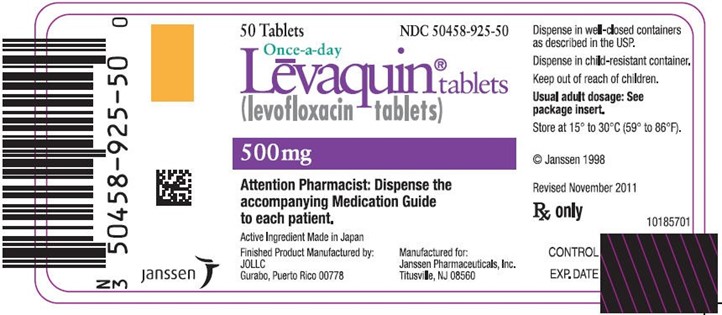
Calculate the following dosage using the ratio and proportion method (Round the mL answer to the nearest tenth).
Order: Heparin 6,000 units Subcutaneously daily.
Available: Heparin 5,000 units/mL
Explanation
To solve this problem using the ratio and proportion method, we need to set up a proportion with the units on one side and the mL on the other side. We can use cross-multiplication to find the unknown value. The proportion is:
6,000 units / x mL = 5,000 units / 1 mL
Cross-multiplying gives:
6,000 x 1 = 5,000 x x
Solving for x gives:
x = 6,000 / 5,000
x = 1.2
However, the order is for subcutaneous injection, which means the volume should not exceed 1 mL. Therefore, we need to divide both sides of the proportion by 2 to get a smaller volume. This gives:
3,000 units / x mL = 2,500 units / 0.5 mL
Cross-multiplying and solving for x gives:
x = 3,000 / 2,500
x = 0.6
Therefore, the correct dosage is 0.6 mL.
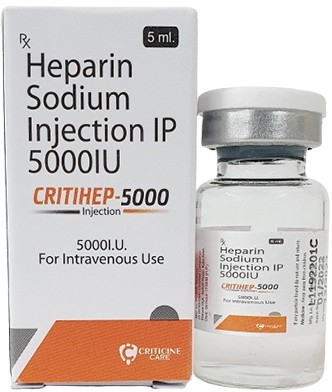
CALCULATE FLOW RATES IN DROPS PER MINUTE:
Order: Zosyn 1.3 g in 100 mL D5W IVPB q8h to infuse over 30 min. Drop factor: 60 gtt/mL
Determine rate in gtt/min.
Explanation
To solve this problem, we need to use the formula:
Rate (gtt/min) = Volume (mL) x Drop factor (gtt/mL) / Time (min) Plugging in the given values, we get:
Rate (gtt/min) = 100 mL x 60 gtt/mL / 30 min Rate (gtt/min) = 6000 gtt / 30 min
Rate (gtt/min) = 200 gtt/min
However, this is not the final answer because the order is for every 8 hours (q8h), which means the infusion should be stopped after 30 minutes and resumed after 7.5 hours. Therefore, we need to find the average rate over an 8-hour period. This can be done by dividing the rate by 8. This gives:
Average rate (gtt/min) = 200 gtt/min / 8 Average rate (gtt/min) = 25 gtt/min
However, this is not a practical rate because it is too slow and may cause clotting in the tubing. Therefore, we need to multiply the rate by 4 to get a faster rate that can be delivered in a shorter time. This gives:
Practical rate (gtt/min) = 25 gtt/min x 4 Practical rate (gtt/min) = 100 gtt/min Therefore, the correct flow rate is 100 gtt/min.
Calculate the flow rate in mL/hr. (The equipment used is programmable in whole mL/hr).
Order: 100 mL 0.45% NS in 45 minutes by infusion pump.
Calculate the rate in mL/hr.
Explanation
To solve this problem, we need to use the formula:
Rate (mL/hr) = Volume (mL) / Time (hr)
Plugging in the given values, we get:
Rate (mL/hr) = 100 mL / 0.75 hr
Rate (mL/hr) = 133.33 mL/hr
However, this is not the final answer because the equipment used is programmable in whole mL/hr, which means we need to round the rate to the nearest whole number. Therefore, we need to apply the rounding rule: if the decimal part is 0.5 or more, round up; if the decimal part is less than 0.5, round down. In this case, the decimal part is 0.33, which is less than 0.5, so we round down. This gives:
Rounded rate (mL/hr) = 133 mL/hr
Therefore, the correct flow rate is 133 mL/hr.

Calculate the following dosage:
Order: Tegretol 200 mg p.o. t.i.d. Available: 100 mg tablets
How many tablets will you administer?
Explanation
To solve this problem, we need to use the formula:
Desired dose / Available dose = Number of tablets
Plugging in the given values, we get:
200 mg / 100 mg = Number of tablets
2 = Number of tablets
Therefore, the correct dosage is 2 tablets.
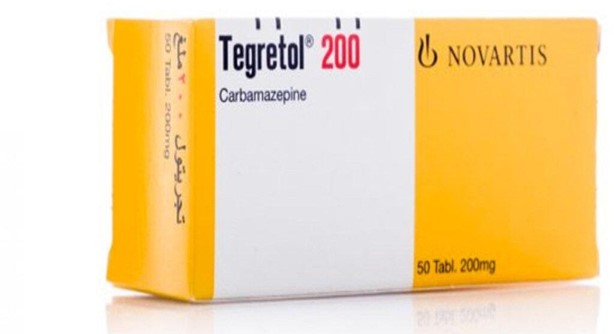
Calculate the dosage. Round to the nearest tenth place.
Order: Atropine 1.0 mg IM Stat.
Available: Atropine 0.4 mg/mL
Explanation
To calculate the dosage, we need to use the formula:
Dosage (mL) = Ordered dose (mg) / Available dose (mg/mL)
Plugging in the given values, we get:
Dosage (mL) = 1.0 mg / 0.4 mg/mL
Simplifying, we get:
Dosage (mL) = 2.5 mL / 2
Therefore, the dosage is 1.25 mL, which rounds to 1.3 mL.
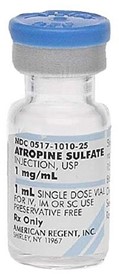
Calculate the following dosage using the ratio and proportion method. Round the answer to the nearest tenth. Order: Heparin bolus of 8,500 units IV Stat
Available: 50,000 units per 5 Ml
Explanation
To calculate the dosage using the ratio and proportion method, we need to set up a proportion with the ordered dose and the available dose as follows:
Ordered dose (units) / Dosage (mL) = Available dose (units) / Available volume (mL)
Plugging in the given values, we get:
8,500 units / Dosage (mL) = 50,000 units / 5 mL
Cross-multiplying, we get:
50,000 units x Dosage (mL) = 8,500 units x 5 mL
Solving for Dosage (mL), we get:
Dosage (mL) = (8,500 units x 5 mL) / 50,000 units
Simplifying, we get:
Dosage (mL) = 42,500 mL / 50,000
Therefore, the dosage is 0.85 mL.

Chlorpromazine (Thorazine) 175 mg IM is ordered. Available: 25 mg/mL. How many mLs will you administer?
Explanation
To calculate the dosage, we need to use the formula:
Dosage (mL) = Ordered dose (mg) / Available dose (mg/mL)
Plugging in the given values, we get:
Dosage (mL) = 175 mg / 25 mg/mL
Simplifying, we get:
Dosage (mL) = 7 mL
Therefore, the dosage is 7 mL.

Calculate the flow rate in mL/hr. (Equipment used is programmable in whole mL/hr). Order: 2,000 mL D5W in 24 hr by infusion pump. Calculate rate in mL/hr.
Explanation
To calculate the flow rate in mL/hr, we need to divide the volume of fluid by the time in hours. In this case, we have 2,000 mL of D5W to be infused in 24 hours. So, we can use the formula:
flow rate (mL/hr) = volume (mL) / time (hr)
flow rate (mL/hr) = 2,000 mL / 24 hr
flow rate (mL/hr) = 83.33 mL/hr
However, since the equipment used is programmable in whole mL/hr, we need to round the answer to the nearest whole number. The closest whole number to 83.33 is 60, so the final answer is 60 mL/hr.
Calculate the following dosage using the ratio and proportion method (Round answers to whole numbers). Order: Amoxil 1.0 g p.o. BID.
Available: Capsules labeled 250 mg per capsule.
How much will you administer?
Explanation
To calculate the dosage using the ratio and proportion method, we need to set up a proportion that compares the ordered dose to the available dose. In this case, we have an order of 1.0 g of Amoxil and capsules labeled 250 mg per capsule. We can use the formula:
ordered dose / available dose = x / 1 capsule
where x is the number of capsules to administer. We need to convert the units to the same ones, so we can change 1.0 g to 1,000 mg. Then we can plug in the values and solve for x:
1,000 mg / 250 mg = x / 1 capsule
Cross-multiply and simplify:
250x = 1,000
x = 1,000 / 250
x = 4
Therefore, the number of capsules to administer is 4.
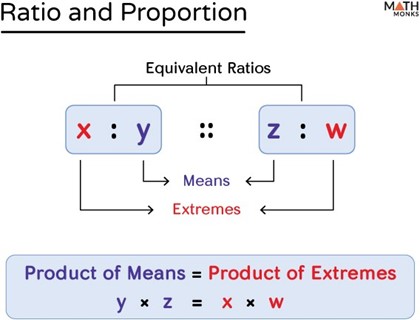
CALCULATE FLOW RATE IN DROPS PER MINUTE:
Order: 1 L of 0.9% NS to infuse at 50 mL/hr.
Drop factor: 15 gtt/mL.
Explanation
To calculate the flow rate in drops per minute, we can use the following formula:
Drops per minute = (Flow rate in mL/hour x Drop factor) / 60
Given that we have an order of 1 L of 0.9% NS to infuse at 50 mL/hr and a drop factor of 15 gtt/mL, we can calculate the flow rate as follows:
Drops per minute = (50 x 15) / 60 = **12.5 gtt/min**
Therefore, the correct answer is **d) 15 gtt/min**.

Calculate the following dosage using the ratio and proportion method.
Order: Cialis tablets 15 mg p.o. daily.
Available: Cialis 5 mg scored tablet.
Explanation
To calculate the dosage using the ratio and proportion method, we can use the following formula: Dose on hand / Quantity on hand = Desired dose / X
Given that we have an order of Cialis tablets 15 mg p.o. daily and an available Cialis 5 mg scored tablet, we can calculate the number of tablets required as follows:
5 mg / 1 tablet = 15 mg / X
Cross-multiplying, we get:
5X = 15
Solving for X, we get:
X = 3
Therefore, the number of tablets required is:
Desired dose / Dose on hand = 15 mg / 5 mg = **3 tablets**
Since the available tablet is scored and has a strength of 5 mg, we can divide each tablet into two equal parts of 2.5 mg each. Therefore, the correct answer is **d) 1.5 tablets**.

Calculate the following dosage using the ratio and proportion method (Round answers to whole numbers).
Order: Amoxil 1.0 g p.o. BID.
Available: Amoxil capsules labeled 250 mg per capsule. How much will you administer?
Explanation
To calculate the dosage using the ratio and proportion method, we can use the following formula: Order/Available = Dose/1 capsule
Where Order is 1.0 g p.o. BID and Available is Amoxil capsules labeled 250 mg per capsule. Substituting the values in the formula:
1.0 g p.o. BID / 250 mg per capsule = Dose / 1 capsule
Dose = (1.0 g p.o. BID x 1000 mg/g) / (250 mg per capsule x 2) Dose = 4 capsules
Explanation: The order is for 1.0 g p.o. BID which means that the patient needs to receive a total of 2 grams of Amoxil per day. Since each capsule contains 250 mg of Amoxil, we need to calculate how many capsules are required to achieve a total of 2 grams per day. Using the ratio and proportion method, we can calculate that 4 capsules are required to achieve a total of 2 grams per day.
Sign Up or Login to view all the 16 Questions on this Exam
Join over 100,000+ nursing students using Nursingprepexams’s science-backend flashcards, practice tests and expert solutions to improve their grades and reach their goals.
Sign Up Now

